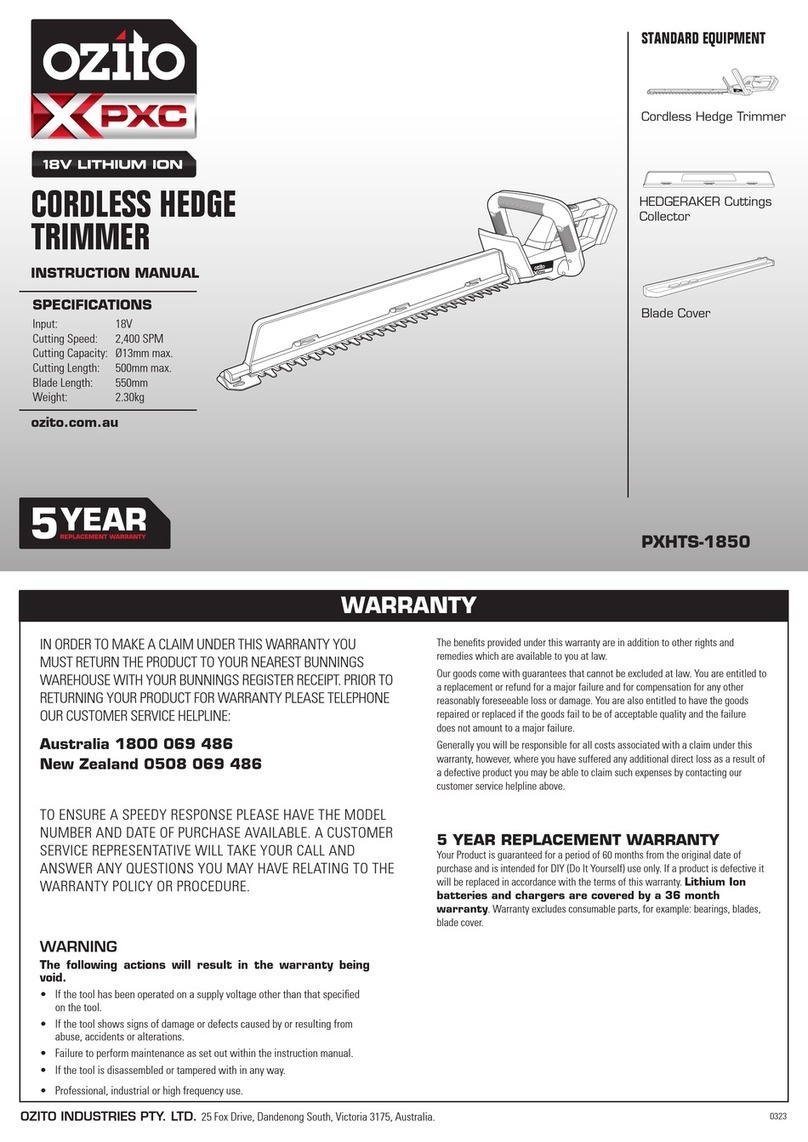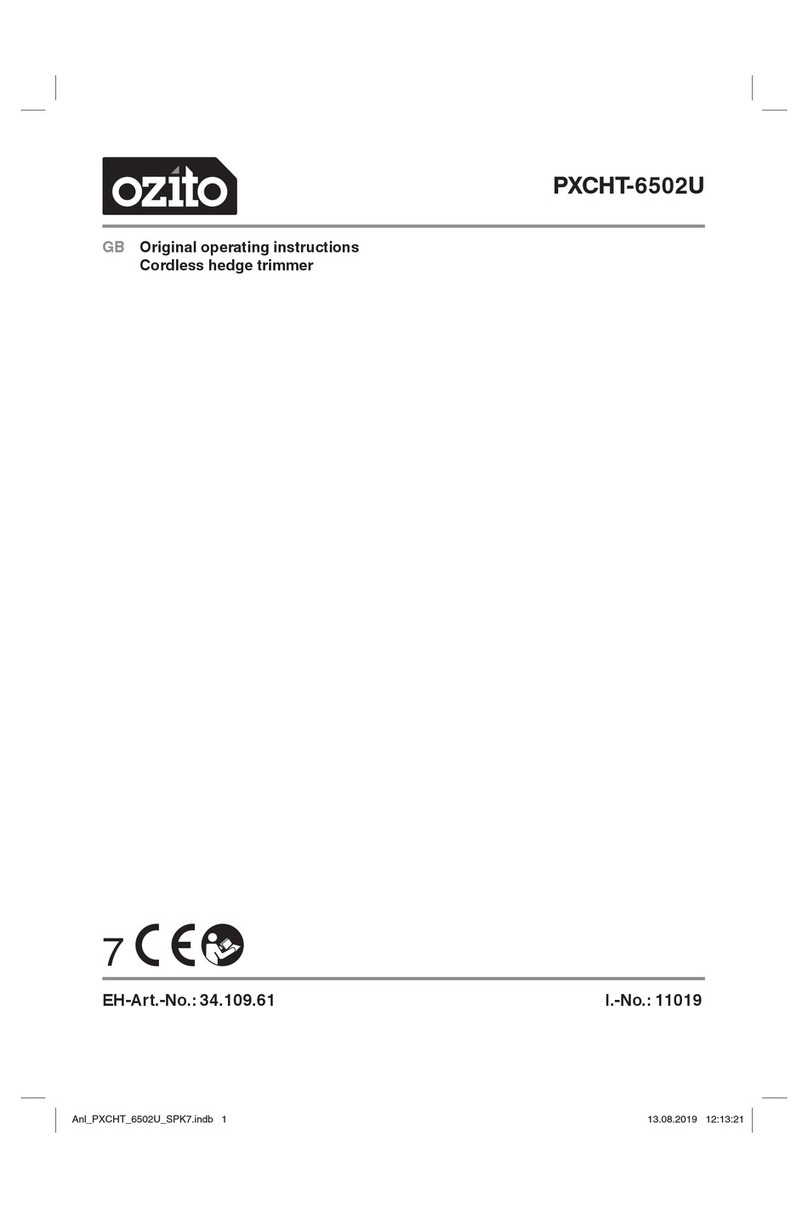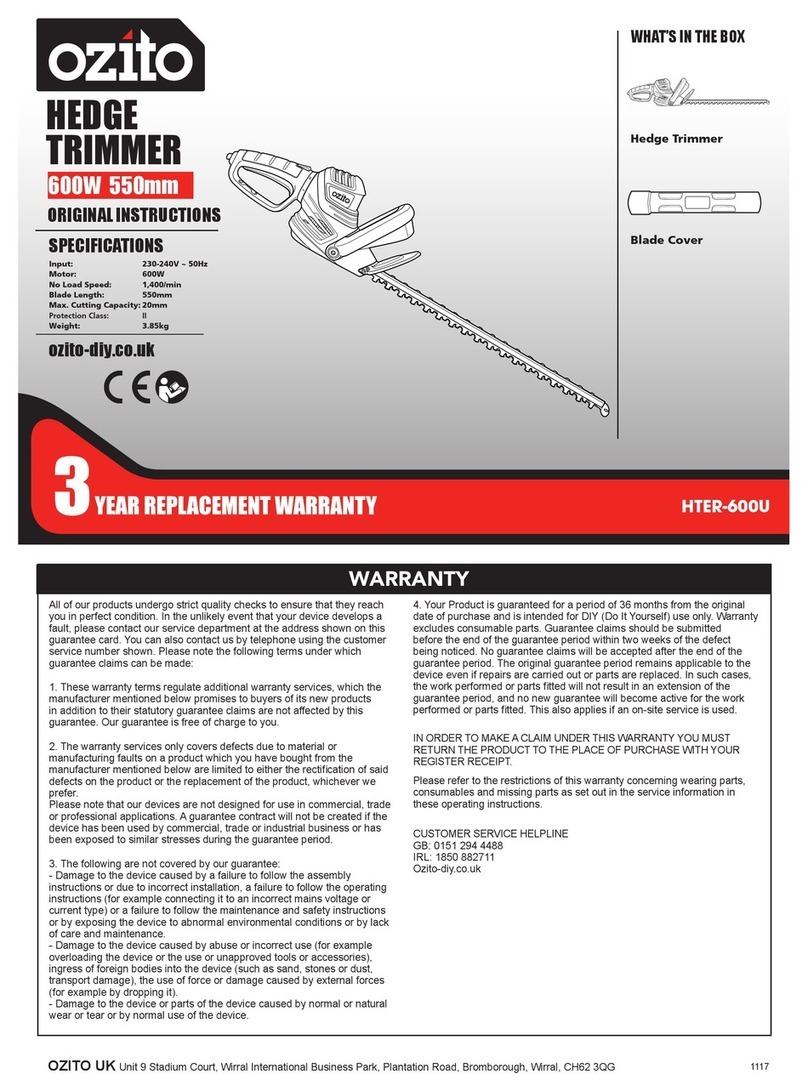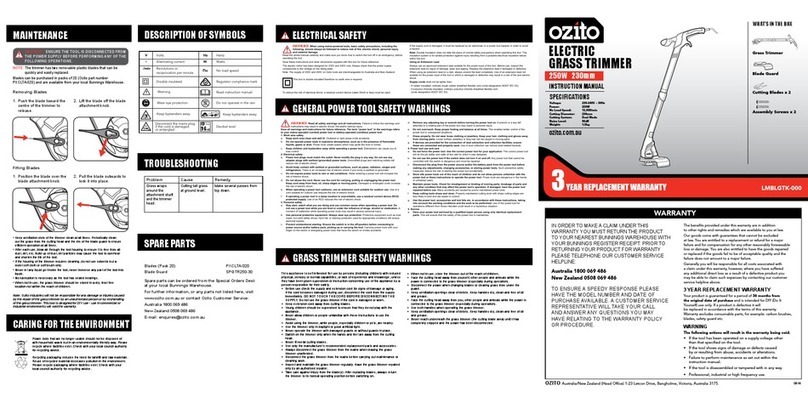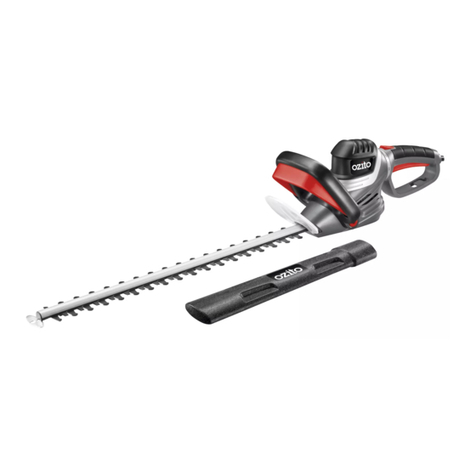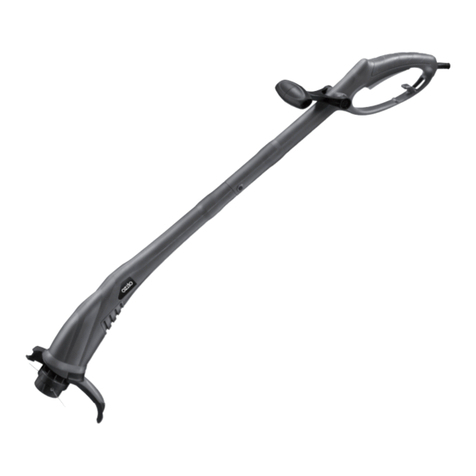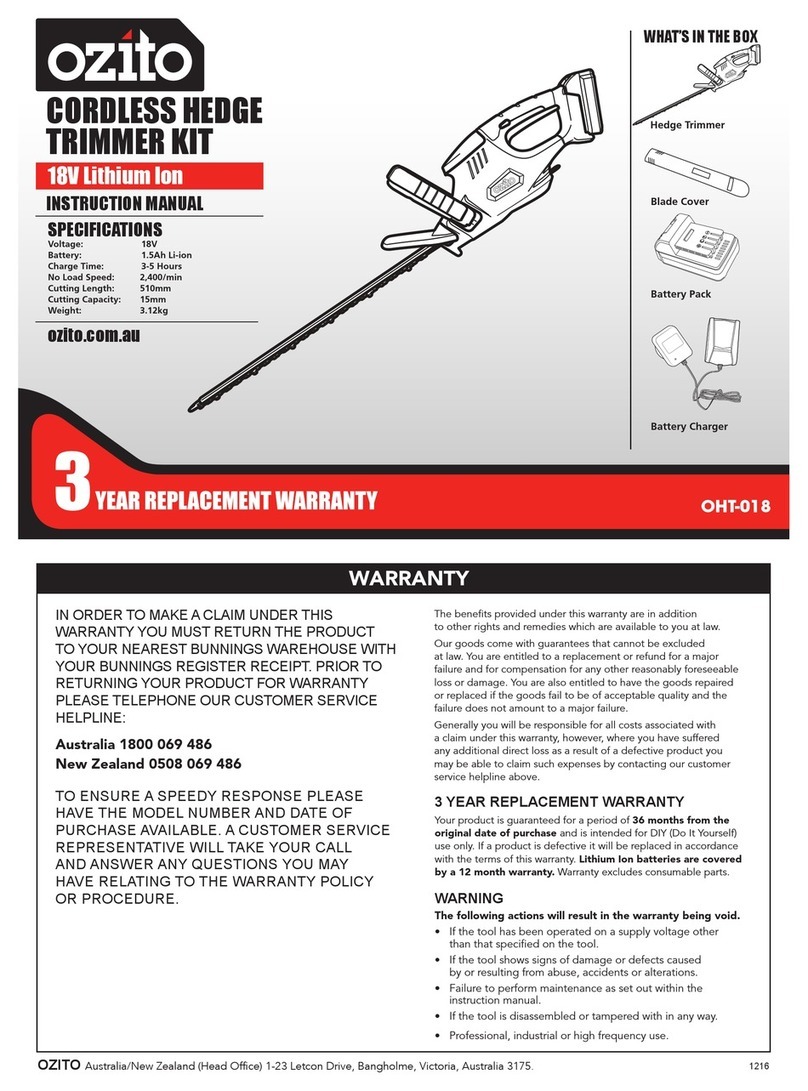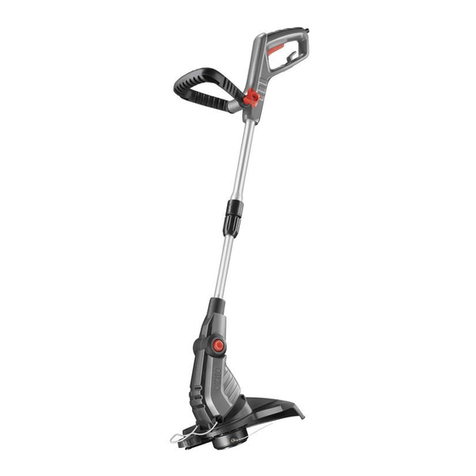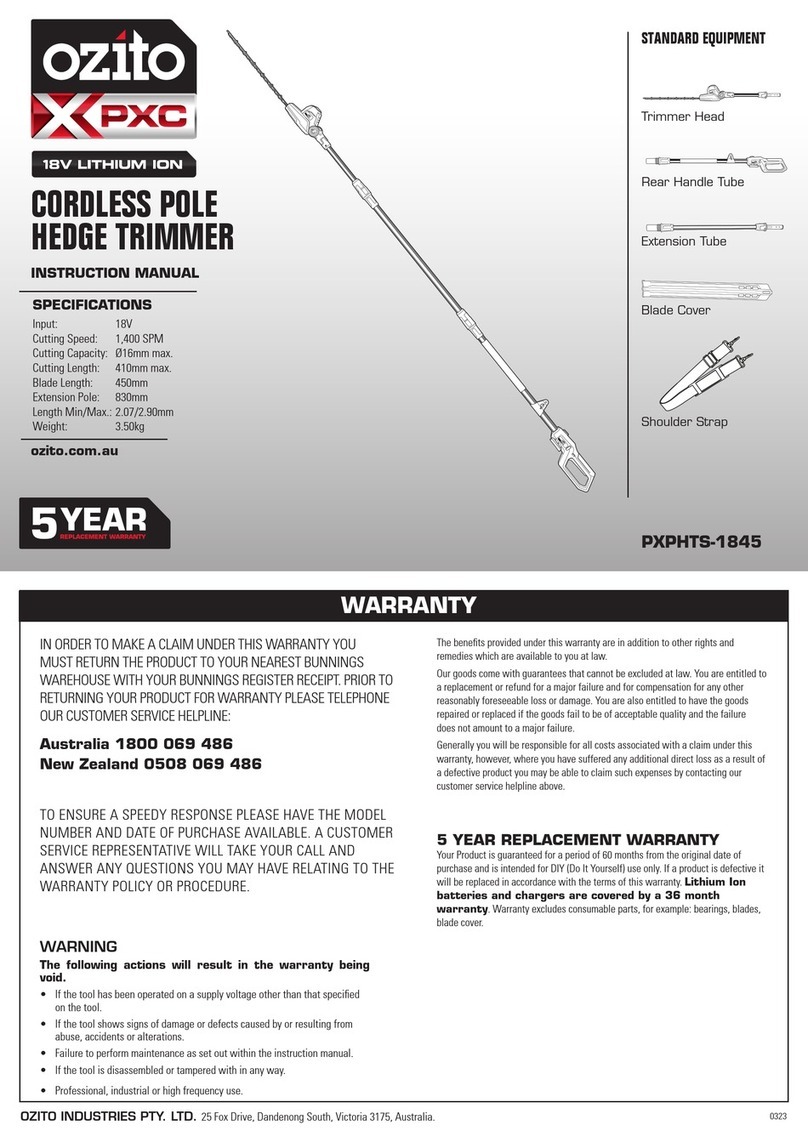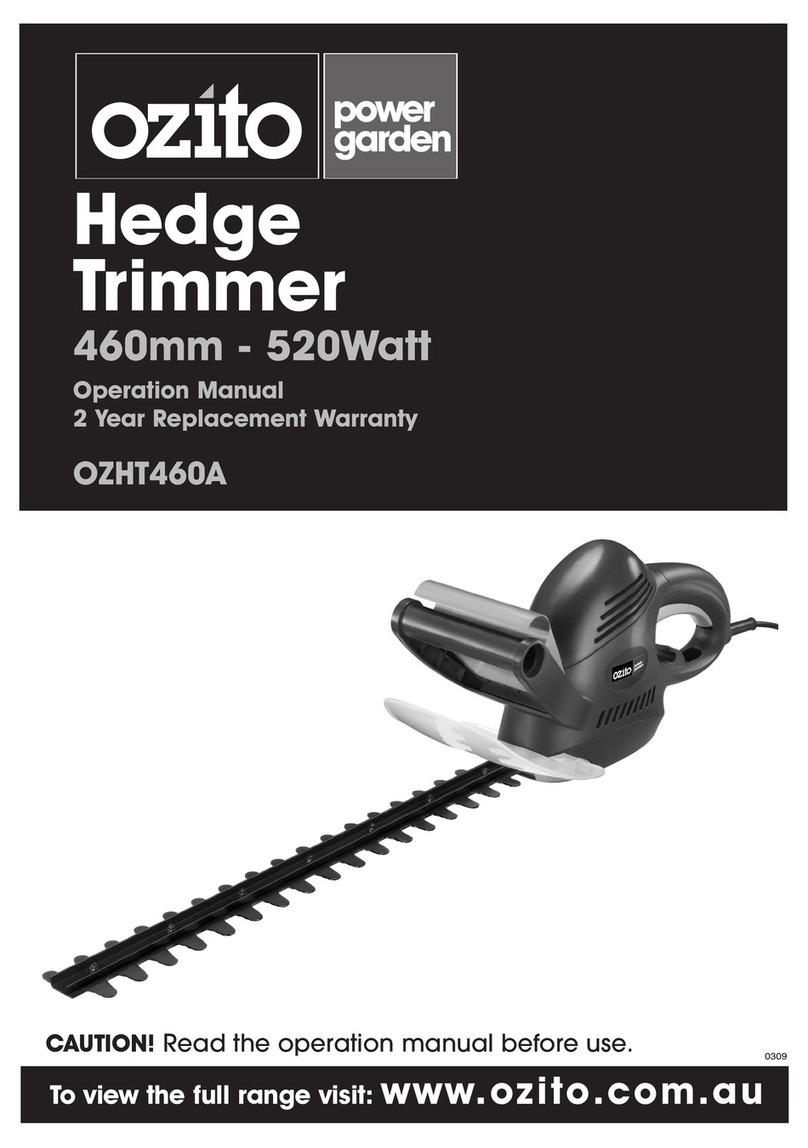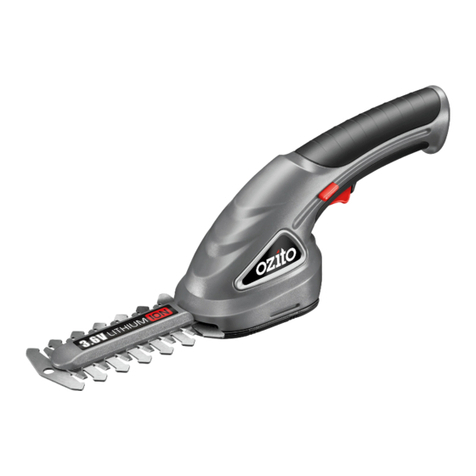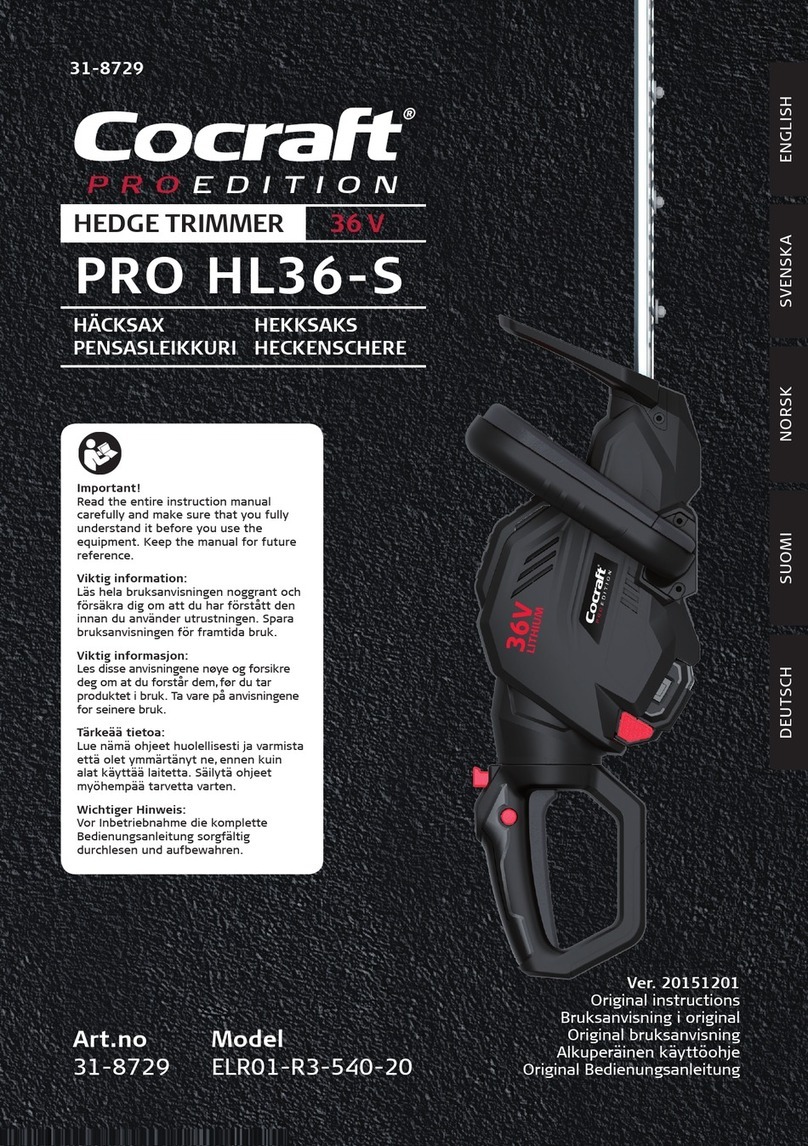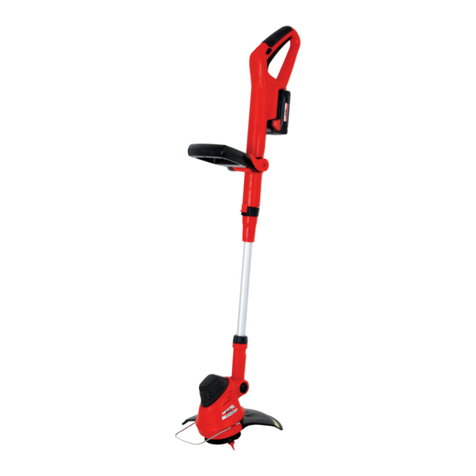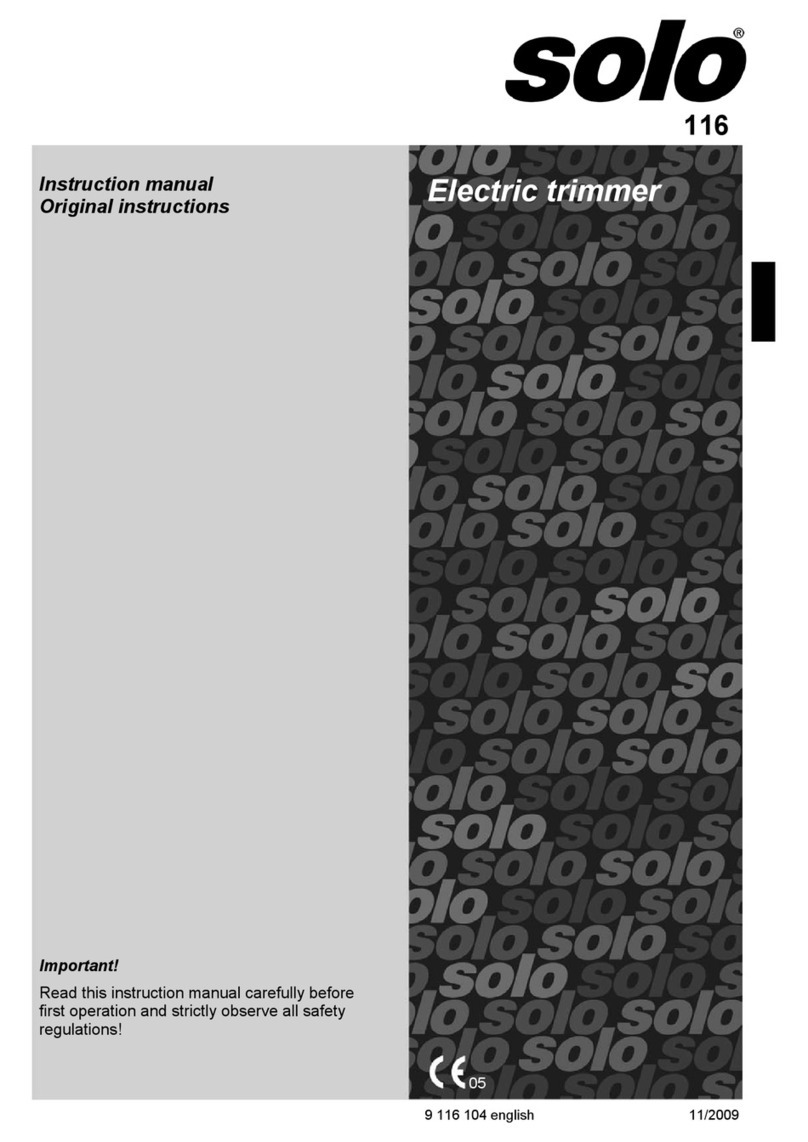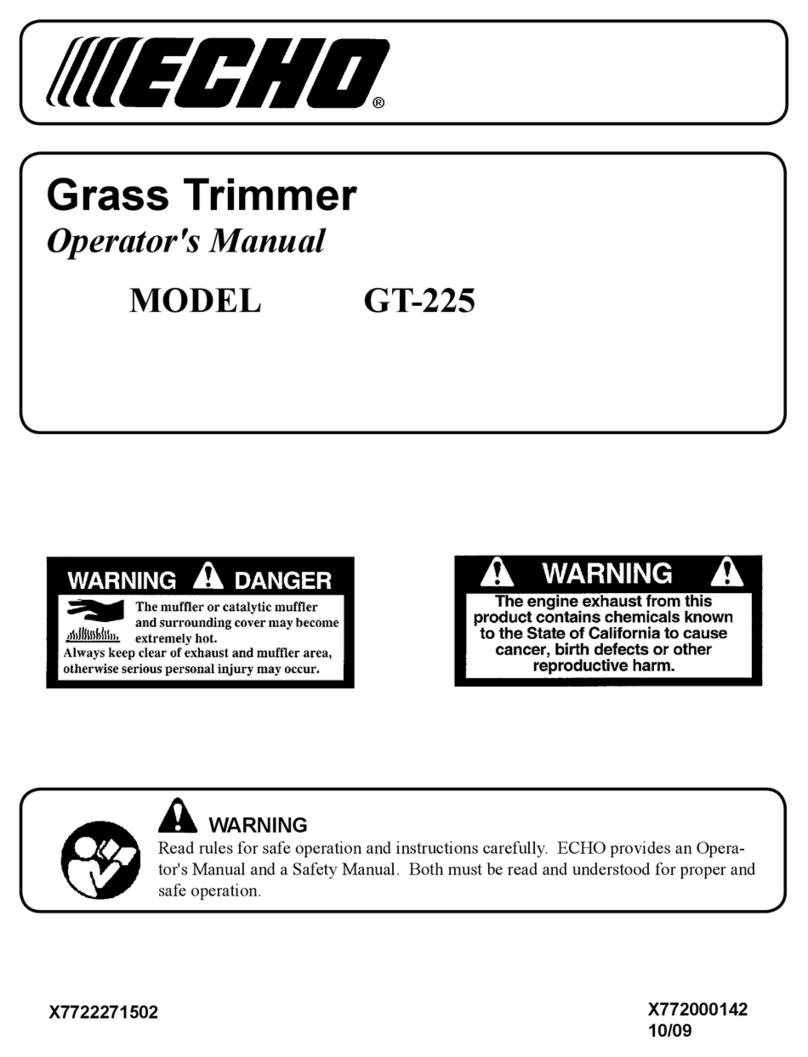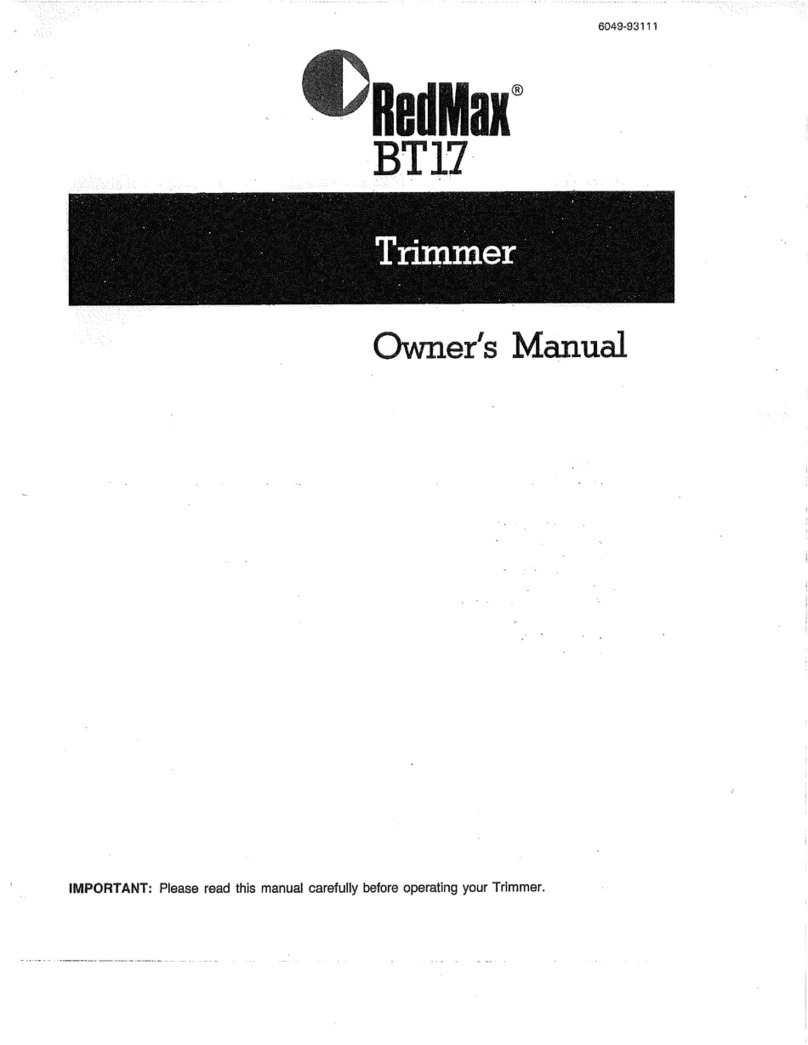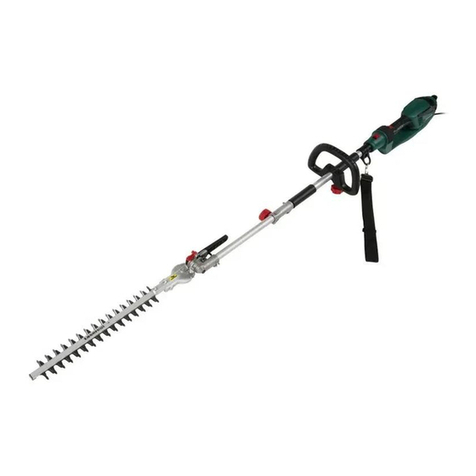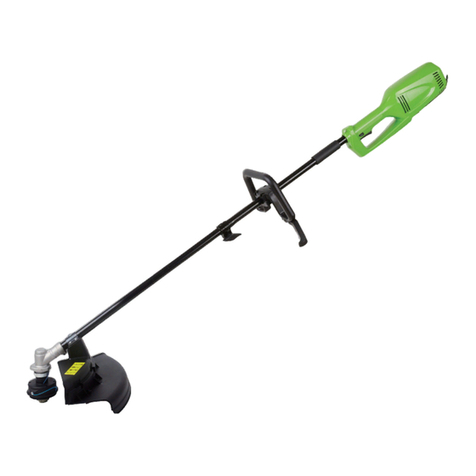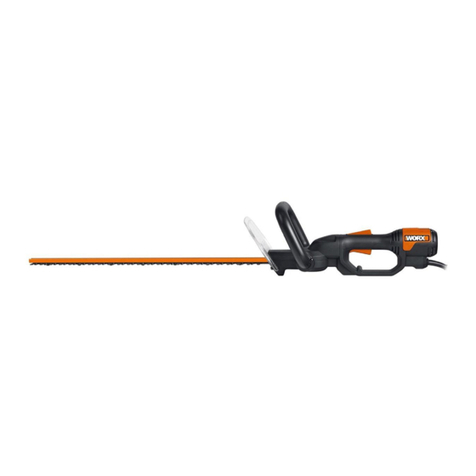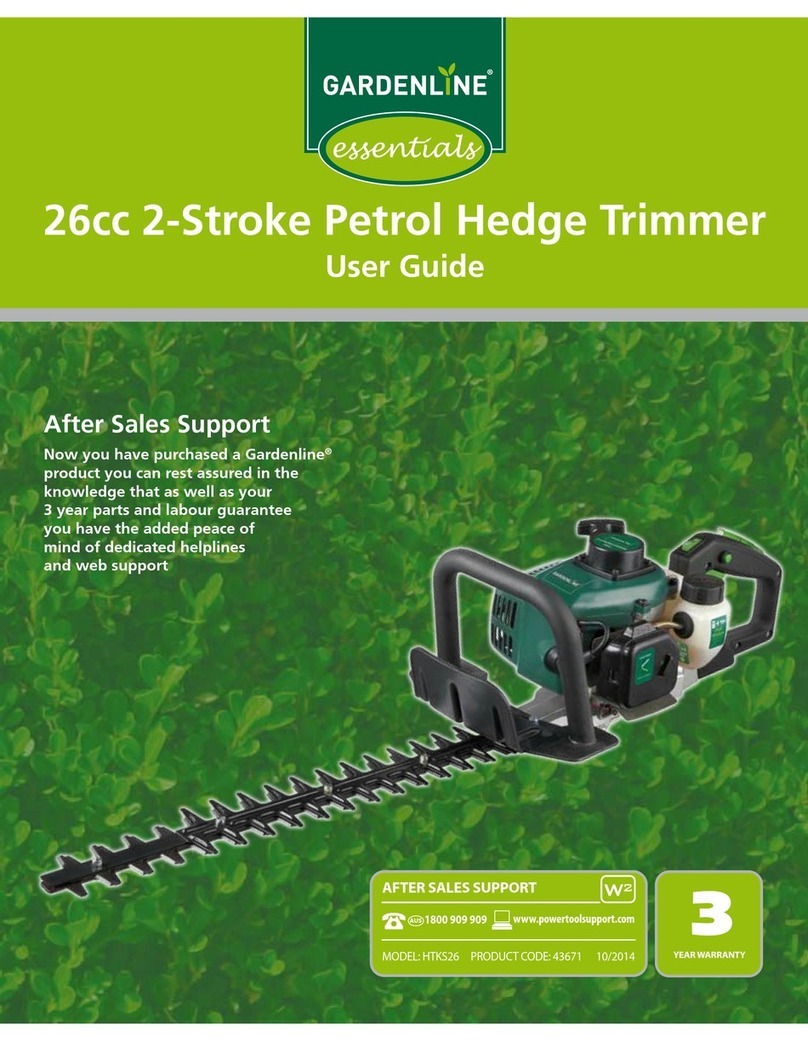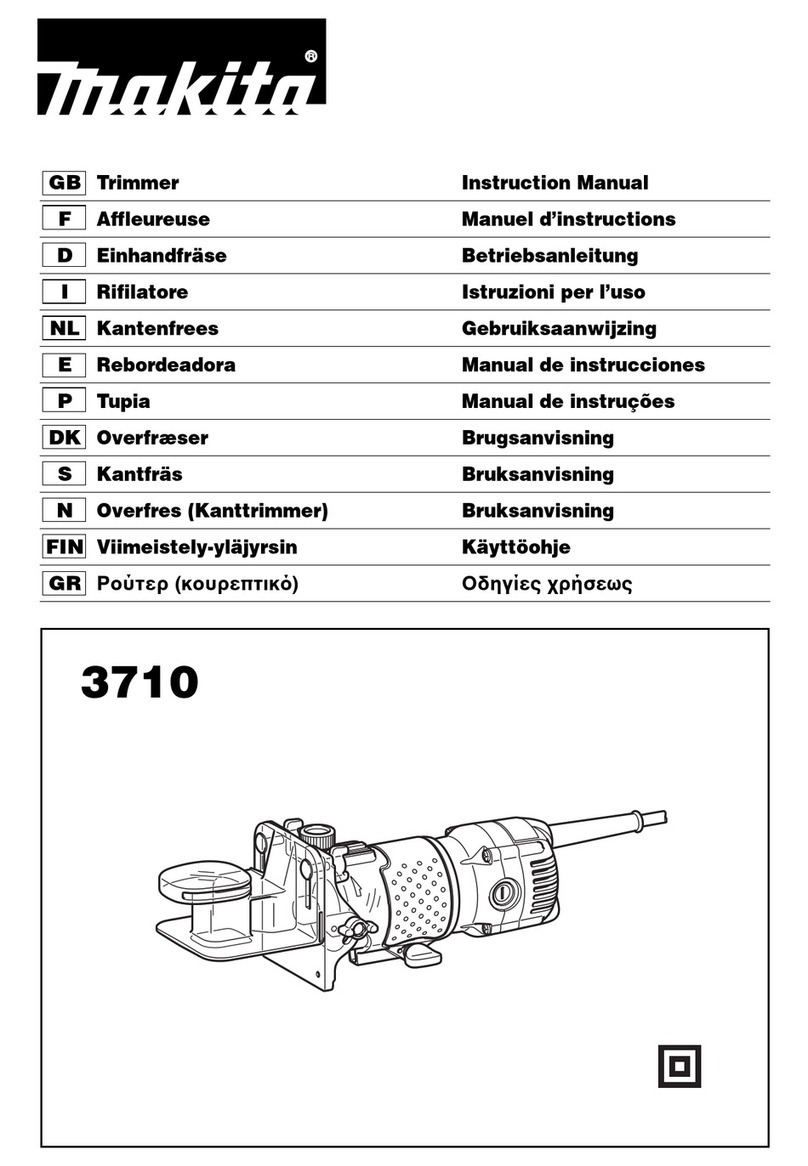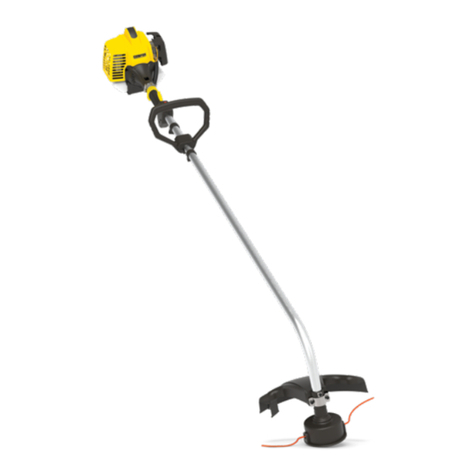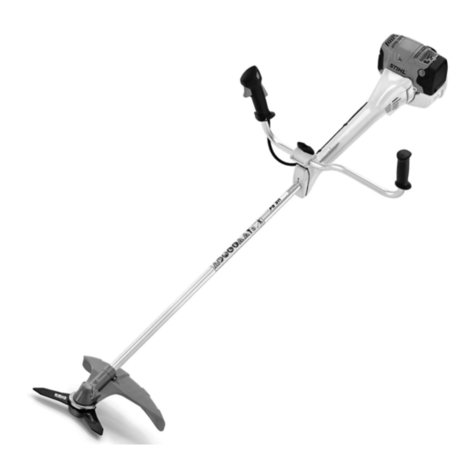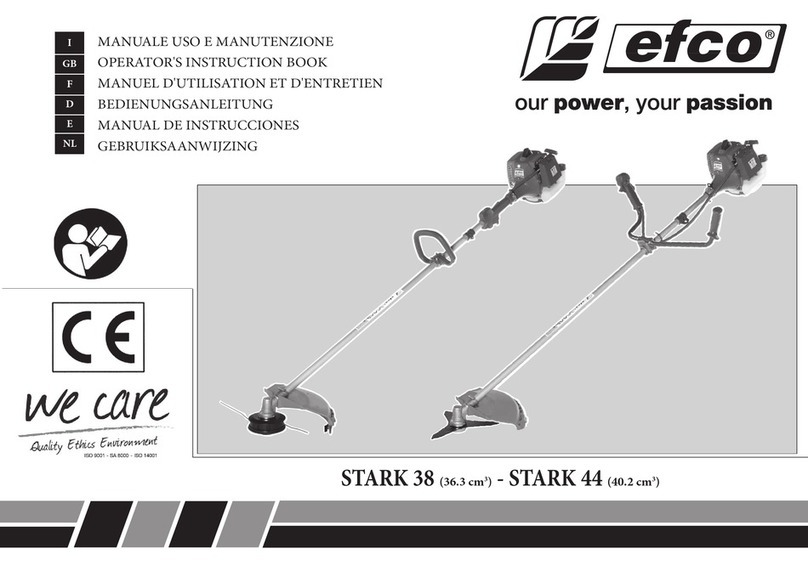6
GENERAL (cont.)
13. Use appropriate tool. The intended use is described in this
instruction manual. Do not force small tools or attachments to do the
job of a heavy duty tool. The tool will do the job better and safer at
the rate for which it was intended. Do not force the tool.
Warning! The use of any accessory or attachment or performance
of any operation with this tool other than those recommended in this
instruction manual may present a risk of personal injury.
14. Check for damaged parts. Before use carefully check the tool and
power lead for damage. Check for misalignment and seizure of moving
parts, breakage of parts, damage to guards and switches and any other
conditions that may affect its operation. Ensure that the tool will
operate properly and perform its intended function. Do not use the tool
if any parts are damaged or defective. Do not use the tool if the switch
does not turn it on and off. Have any damaged or defective parts
repaired or replaced by an electrician or a power tool repairer. Never
attempt any repairs yourself.
15. Unplug the tool. Unplug the tool when it is not in use, before changing
any parts of the tool, accessories or attachments and before servicing.
16. Avoid unintentional starting. Do not carry the tool with a finger on
the on/off switch. Make sure the tool is switched off when plugged in.
17. Do not abuse the cord. Never carry the tool by its cord or pull it to
disconnect from the socket. Keep the cord away from heat, oil and
sharp edges.
18. Store idle tools. When not in use, tools should be stored in a dry,
locked up or high place, out of reach of children.
19. Maintain tools with care. Keep cutting tools sharp and clean for
better and safer performance. Follow the instructions for maintenance
and changing accessories. Keep handles and switches dry, clean and
free from oil and grease.
20. Have your tool repaired by an electrician or a power tool repairer.
This power tool complies with relevant safety requirements. To avoid
danger, electrical appliances must only be repaired by qualified
technicians using original spare parts; otherwise this may result in
considerable danger to the user.
21. Users. This appliance is not intended for use by young children
or infirmed persons without supervision.

